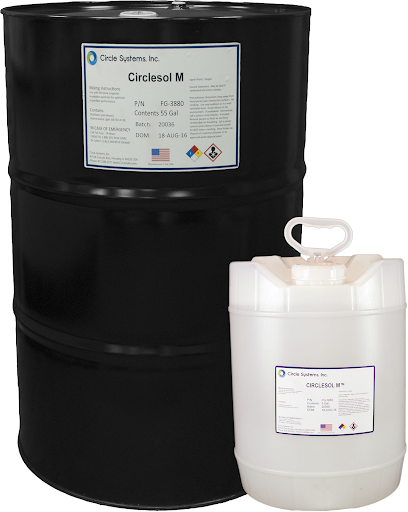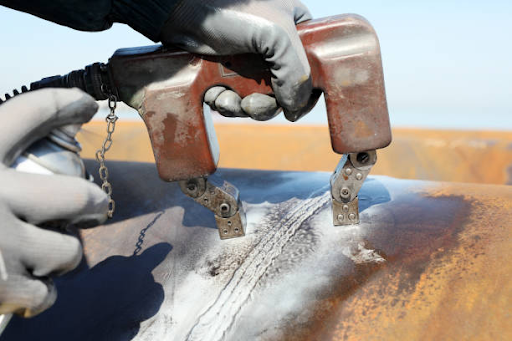Table of Content
- What is Wet Method Magnetic Particle Testing?
- How Wet Method MPT Works?
- Magnetic Particle Testing Equipment
- Applications of Wet Method MPT
- Benefits of Wet Method MPT
- Conclusion
- FAQs
The Wet Method Magnetic Particle Testing is a specialized technique in Non Destructive Testing (NDT). It uses a liquid with magnetic particles to detect surface and near-surface defects in ferromagnetic materials. This method is widely used in many industries to ensure the integrity of materials without causing any damage. The liquid application helps reveal even the smallest flaws, making it a reliable and efficient method.
What is Wet Method Magnetic Particle Testing?
Wet Method Magnetic Particle Testing involves suspending fine magnetic particles in a liquid carrier, usually water or oil, which is then applied to the material being tested. This method is particularly effective for detecting very fine surface cracks and subsurface defects.
While Dry Magnetic Particle Testing uses dry magnetic particles, the wet MPI method provides better coverage and sensitivity, especially for smoother surfaces and detecting finer defects. The liquid carrier allows for a more uniform distribution of particles and better visibility under ultraviolet or visible light.
How Wet Method MPT Works?

Wet method magnetic particle testing is a Non-destructive Testing Technique used to detect surface and near-surface flaws in ferromagnetic materials. This method involves applying a magnetic field to the material, followed by magnetic particle testing for defects, making flaws visible under UV light.
Step-by-Step Process:
- Preparation:
Clean the surface of the material to remove any dirt, grease, or other contaminants.
- Magnetization:
Apply a magnetic field to the material using a yoke, coil, or permanent magnet.
- Application of Magnetic Particles:
Spray or brush the liquid containing magnetic particles onto the surface.
- Inspection:
Examine the surface under appropriate lighting to identify any indications of defects.
- Demagnetization:
Remove the magnetic field to avoid residual magnetism in the material.
- Cleaning:
Clean the material to remove any remaining magnetic particles
Magnetic Particle Testing Equipment
Magnetic Particle Testing Equipment is used to detect surface and near-surface flaws in ferromagnetic materials. This nondestructive testing method involves applying magnetic particles to the surface of the material and creating a magnetic field to reveal any defects.
- Magnetizing Devices:
Magnetizing devices can be either permanent magnets or electromagnets, depending on the specific application requirements. The magnetic field attracts the particles to any surface flaws, making them visible under UV light for inspection.
- Suspension Medium:
The suspension medium allows for easy application of the magnetic particles onto the material’s surface, ensuring even coverage.
- Magnetic Particles:
The particles can be colored for better visibility against the material being inspected.
- Inspection Lights:
Inspection lights are essential for illuminating the magnetic particles and any surface flaws they have gathered at, allowing inspectors to easily detect any defects.
- Demagnetizers:
Demagnetizers are crucial for preventing interference with future inspections or operations. They ensure that the material is left in a neutral state after the magnetic particle testing process.
Different industries might use specialised equipment based on their specific needs, including portable units for field testing and stationary units for laboratory settings.
Applications of Wet Method MPT

Magnetic Particle testing is a critical non-destructive testing method used to detect surface and slightly subsurface defects in ferromagnetic materials. Among the various techniques available, the wet method, MPT, stands out for its effectiveness and versatility. Wet MPT is widely utilized in various industries such as aerospace, automotive, construction, oil and gas, and manufacturing.
1. Applications in Aerospace
Aircraft components undergo significant stress during operation, making them prone to fatigue cracks. The wet method of MPT is crucial for detecting these cracks early, ensuring the safety and reliability of the aircraft. Regular Inspections in Aerospace using wet MPT help maintain the structural integrity of critical components, such as landing gears and engine parts, preventing catastrophic failures.
2. Applications in Automotive Industry
Automotive components, from engine parts to axles, are inspected using wet MPT to ensure they meet quality standards and are free from manufacturing defects. Incorporating wet MPT into quality control processes helps manufacturers maintain high standards, reducing the risk of defects in final products.
3. Applications in Construction
Wet MPT is extensively used To Inspect Welds and Joints in Pipelines, ensuring they are free from cracks and other defects that could lead to leaks or failures. By regularly inspecting construction materials and welds, wet MPT helps maintain safety standards, preventing accidents and structural failures.
4. Applications in Oil and Gas
In the oil and gas industry, wet MPT is used to inspect critical components of drilling rigs, pipelines, and other machinery, preventing failures that could lead to costly downtimes or environmental hazards.
5. Applications in Manufacturing
Manufacturing machinery undergoes rigorous inspection using wet MPT to ensure all components are defect-free, enhancing the overall efficiency and longevity of the machinery.
Regular use of wet MPT in preventive maintenance schedules helps identify potential issues before they become major problems, reducing downtime and repair costs.
NDT Products represents Circle Systems, Inc. magnetic particle inspection products, a trusted supplier to major manufacturers and nondestructive testing companies. Circle Systems uses advanced chemical technologies and manufacturing methods for their magnetic inspection particles. Their products are designed to provide reliable and accurate results in detecting surface and subsurface defects in ferrous materials.
Benefits of Wet Magnetic Particle Testing
Wet method magnetic particle testing is a non-destructive testing technique used to detect surface and near-surface flaws in ferromagnetic materials. By applying a magnetic field and a liquid suspension of magnetic particles, this method can identify cracks, porosity, and other defects that may compromise the integrity of the material.
- High Sensitivity:
Due to its high sensitivity, the wet method is capable of spotting minute flaws that other testing techniques might miss.
- Uniform Coverage:
The liquid medium ensures an even distribution of magnetic particles. This allows for a thorough inspection of the entire surface, providing a reliable assessment of the material’s quality.
- Versatility:
The wet method can be used on ferrous and non-ferrous materials, as well as complex shapes and sizes. This makes it a versatile and adaptable technique for ensuring the integrity of critical components in various industries.
Conclusion
Wet method magnetic particle testing is a powerful and versatile NDT technique. Its ability to detect fine and subsurface defects makes it invaluable across various industries. As technology advances, the efficiency and accuracy of wet MPT will continue to improve, ensuring even higher standards of quality and safety.
NDT Products offer the best services, providing expert technicians and top-of-the-line equipment to ensure reliable results. With NDT Products, your inspections will be thorough and precise, meeting all industry standards and regulations.
FAQs
1.What is the difference between wet and dry MPT?
A: The primary difference is that wet MPT uses a liquid carrier for magnetic particles, providing better coverage and sensitivity, especially for fine and smooth surfaces.
2. Is wet method MPT safe for all environments?
A: While generally safe, proper safety protocols must be followed to handle the magnetic particles and suspension media, especially in sensitive environments.